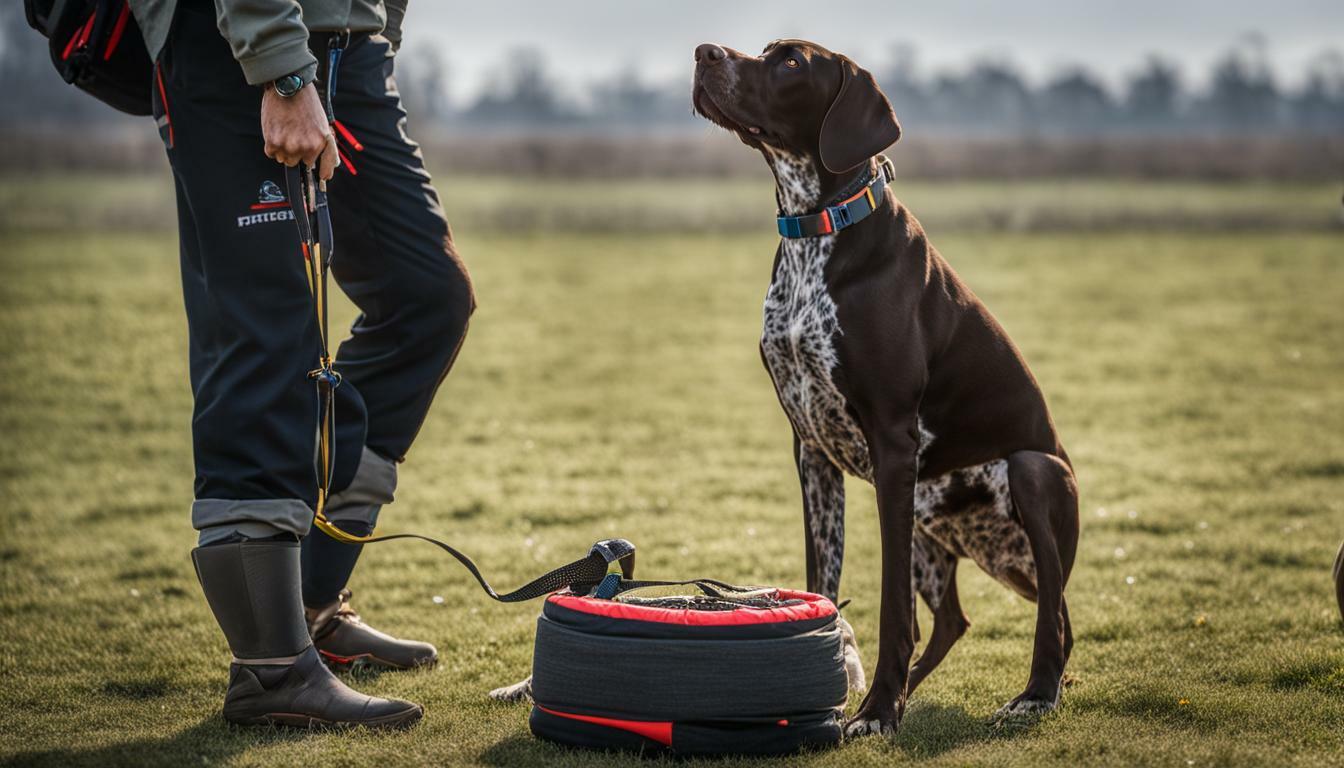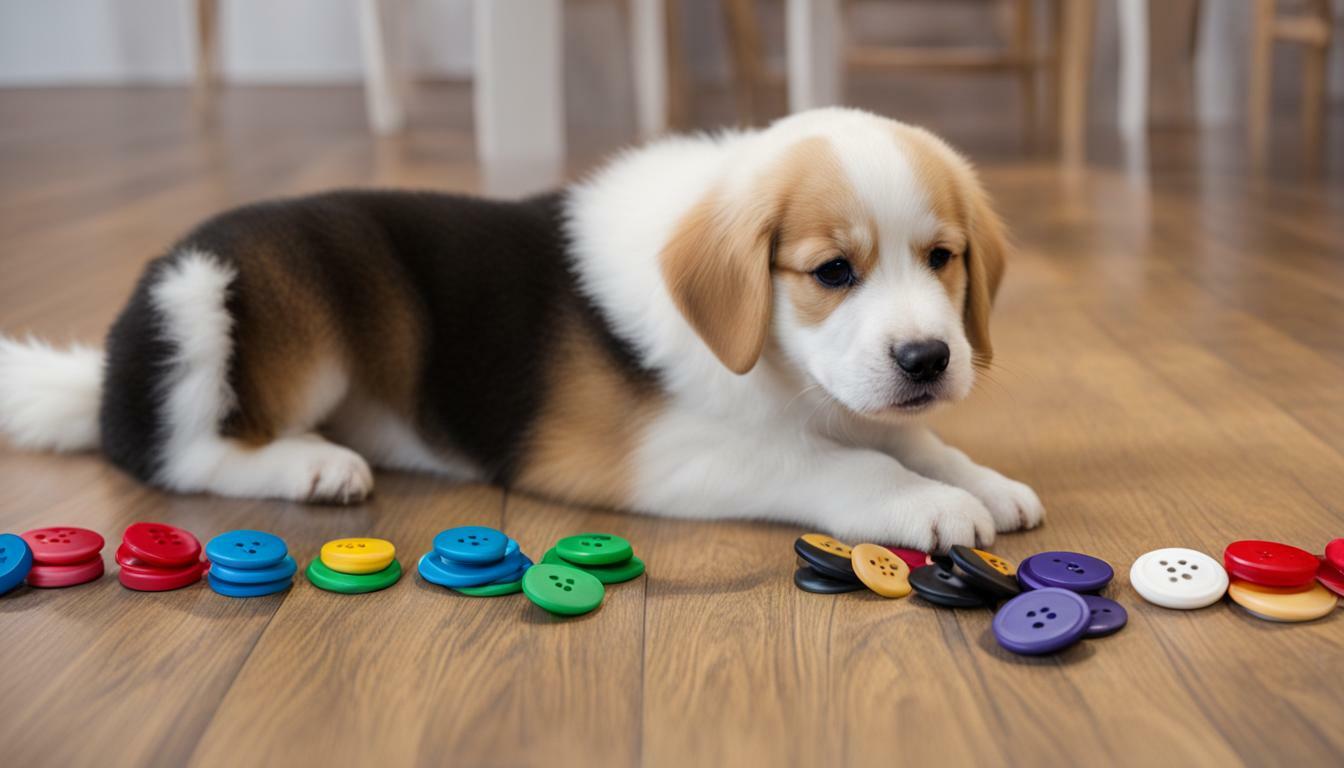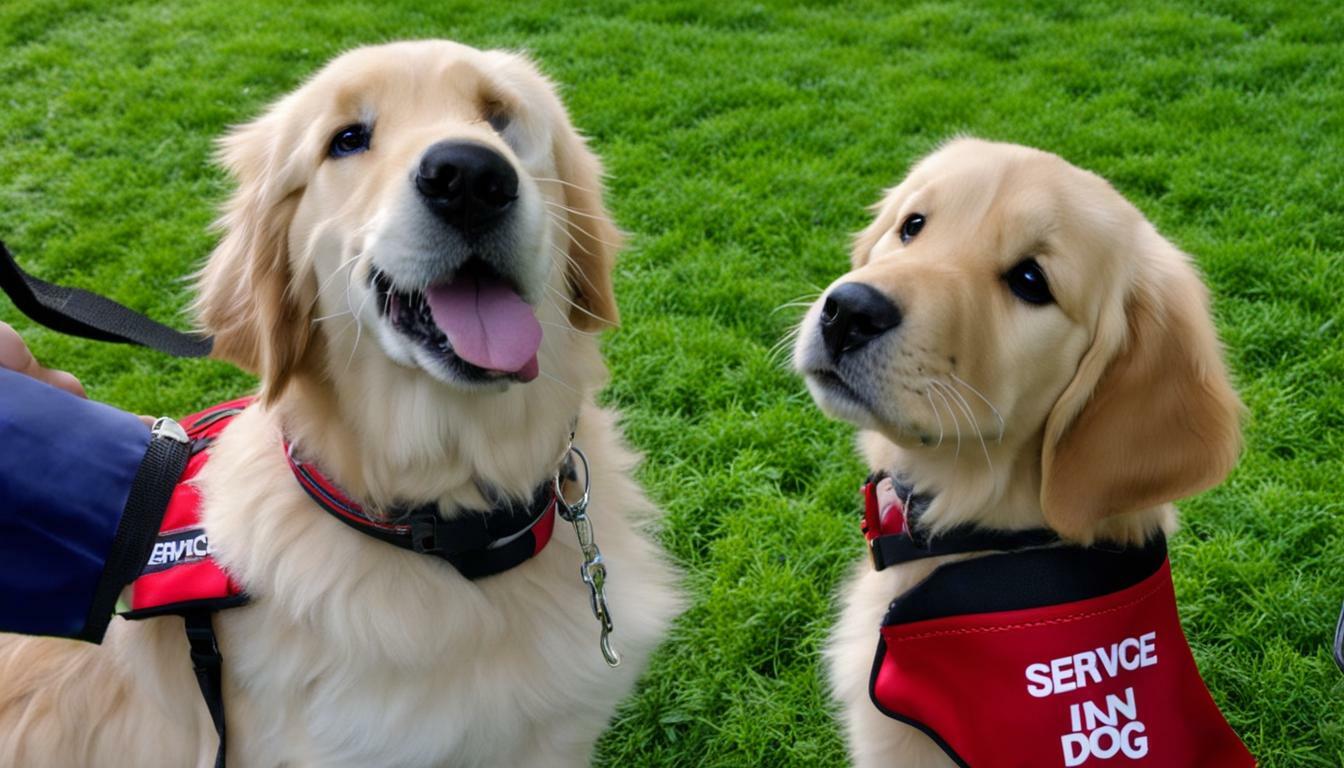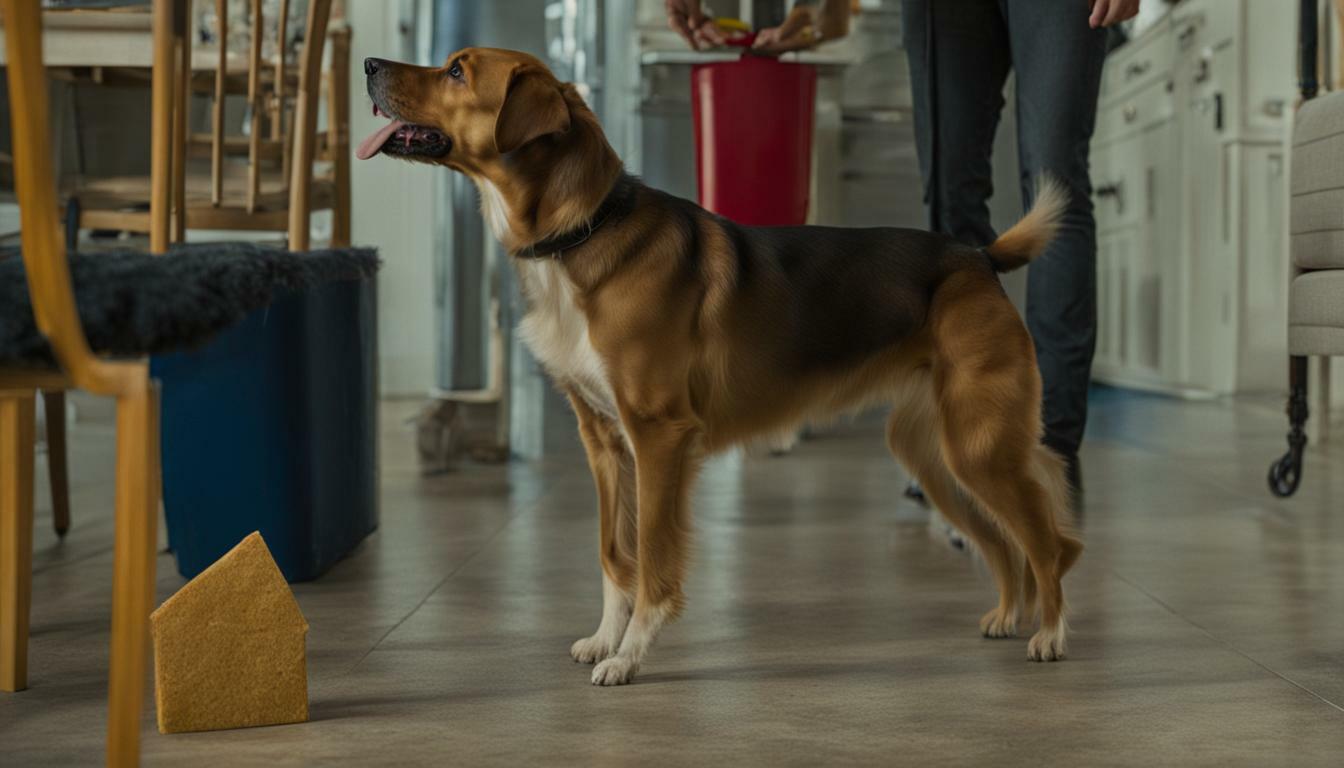Are you ready to unlock success with your German Shorthaired Pointer? Our comprehensive training guide is designed specifically for this energetic breed.
Mastering the art of training a German Shorthaired Pointer (GSP) involves several key steps. Firstly, it is important to teach your GSP basic commands such as sit, stay, come, and heel. GSPs have a natural hunting instinct, so it is crucial to redirect this instinct by providing them with toys, playing fetch, and engaging in other physical activities. Regular exercise is essential to prevent destructive behavior caused by pent-up energy. Crate training is also recommended to provide your GSP with a safe and comfortable space when you are not around. House training, leash training, and socializing your GSP with other dogs and people are also important milestones to achieve. Positive reinforcement, short training sessions, and consistency are key to success in training your GSP. It is also crucial to address any behavioral issues using a systematic approach based on scientific principles. By following these steps and seeking professional guidance if needed, you can master the art of training your German Shorthaired Pointer.
Key Takeaways:
- Teach your GSP basic commands like sit, stay, come, and heel.
- Redirect your GSP’s hunting instinct through toys and physical activities.
- Regular exercise is essential to prevent destructive behavior.
- Consider crate training for a safe and comfortable space.
- Achieve milestones such as house training, leash training, and socialization.
Understanding the German Shorthaired Pointer Breed
Before diving into training techniques, it is important to understand the unique characteristics and needs of the German Shorthaired Pointer (GSP) breed. GSPs are known for their intelligence, agility, and boundless energy. They were originally bred for hunting, specifically for pointing and retrieving game. This instinct to hunt is deeply ingrained in their DNA, which means that training a GSP requires a specific approach.
When it comes to GSP training, it is crucial to provide them with mental and physical stimulation. They thrive when given tasks to complete and plenty of exercise. Without proper outlets for their energy, GSPs can become bored and develop destructive behaviors. This is why regular exercise, such as long walks, runs, or play sessions, is essential.
GSPs are quick learners and respond well to positive reinforcement training methods. They are eager to please their owners and excel in various dog sports, such as agility, obedience, and tracking. Additionally, socialization is crucial for GSPs to ensure they develop into well-rounded and friendly dogs. Introducing them to different environments, people, and dogs from a young age will help them feel confident and comfortable in various situations.
The GSP Breed Characteristics:
| Traits | Description |
|---|---|
| Intelligence | GSPs are highly intelligent and can quickly pick up on training cues. |
| Energy | These dogs have an abundance of energy and require regular exercise to keep them happy and well-behaved. |
| Instinct to Hunt | GSPs have a natural hunting instinct that needs to be redirected through training and engaging activities. |
| Trainability | GSPs are eager to learn and respond well to positive reinforcement training methods. |
Understanding the unique characteristics of the German Shorthaired Pointer breed is crucial for successful training. By catering to their high energy levels, providing mental and physical stimulation, and using positive reinforcement, you can cultivate a well-behaved and happy GSP. Stay tuned for the next sections of our German Shorthaired Pointer Training Guide to discover expert tips and techniques to train your GSP effectively.
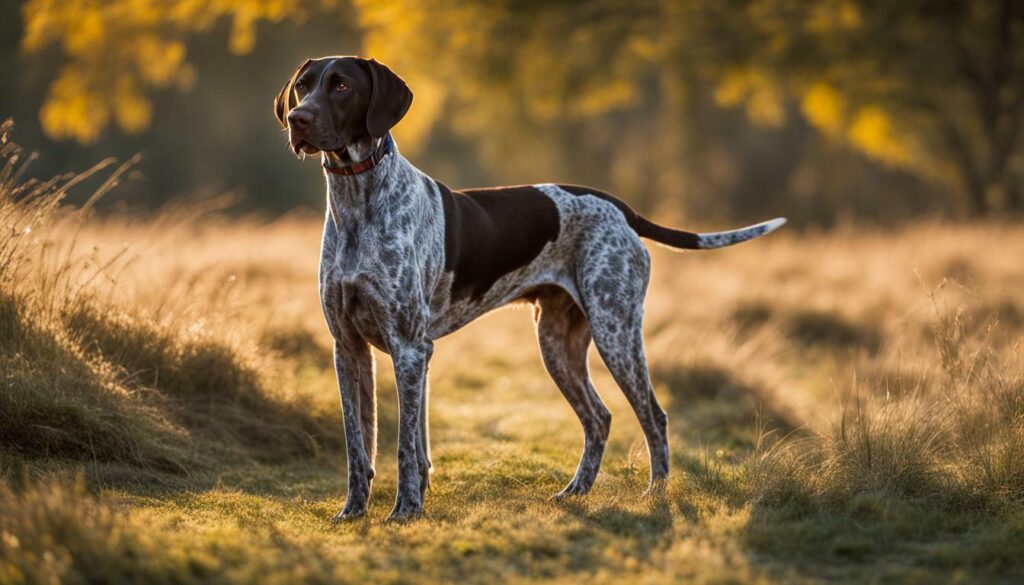
Teaching your GSP basic commands such as sit, stay, come, and heel is the foundation of successful training. These commands establish the groundwork for effective communication between you and your furry companion. Start by using positive reinforcement techniques, such as treats or praise, to reward your GSP for following each command correctly. Be patient and consistent, as it may take some time for your GSP to fully grasp each command.
Incorporating short, focused training sessions into your daily routine will help your GSP retain what they’ve learned. Keep in mind that GSPs are intelligent and energetic dogs, so keeping training sessions engaging and varied is essential to keep them motivated. Additionally, always use a confident and firm tone of voice when giving commands, as this will help your GSP understand your expectations.
As you progress with your GSP’s training, it’s important to introduce distractions gradually. Start in a quiet environment and gradually increase the level of distractions, such as other people or dogs nearby. This will help your GSP generalize their commands and respond even in challenging situations. Remember to always reward and reinforce desired behavior, and avoid punishment-based training methods, as they can hinder the learning process and damage the bond between you and your GSP.
| Command | Description |
|---|---|
| Sit | Train your GSP to sit on command by using a treat or toy as a lure. Slowly raise the treat or toy above your GSP’s head, prompting them to lower their rear end into a sitting position. As they sit, say the command “sit” and immediately reward them with the treat or toy. |
| Stay | Teaching your GSP to stay in one place is crucial for their safety and obedience. Begin by having your GSP sit, then give the command “stay” while using your hand as a stop sign. Take a step back and reward them if they remain in the sit position. Gradually increase the distance and time they must stay before giving the reward. |
| Come | Training your GSP to come when called is essential for their safety and to prevent them from running off. Start in a quiet, enclosed area and call your GSP’s name followed by the command “come.” Bend down and open your arms, encouraging them to come to you. Reward them with praise and a treat when they reach you. |
| Heel | Teach your GSP to walk beside you without pulling on the leash by using the command “heel.” Put your GSP on a leash and hold it in your left hand, allowing them to walk on your left side. Use treats or praise as positive reinforcement when your GSP walks calmly beside you. Gradually increase the duration and distance of the walk. |
Pro Tip:
Remember that consistency and patience are key when training your GSP. Set aside dedicated time each day for training sessions, and always end on a positive note. Celebrate small victories and progress made, as this will keep both you and your GSP motivated and engaged in the training process. With time and effort, you will build a strong bond with your GSP and have a well-trained, obedient companion by your side.
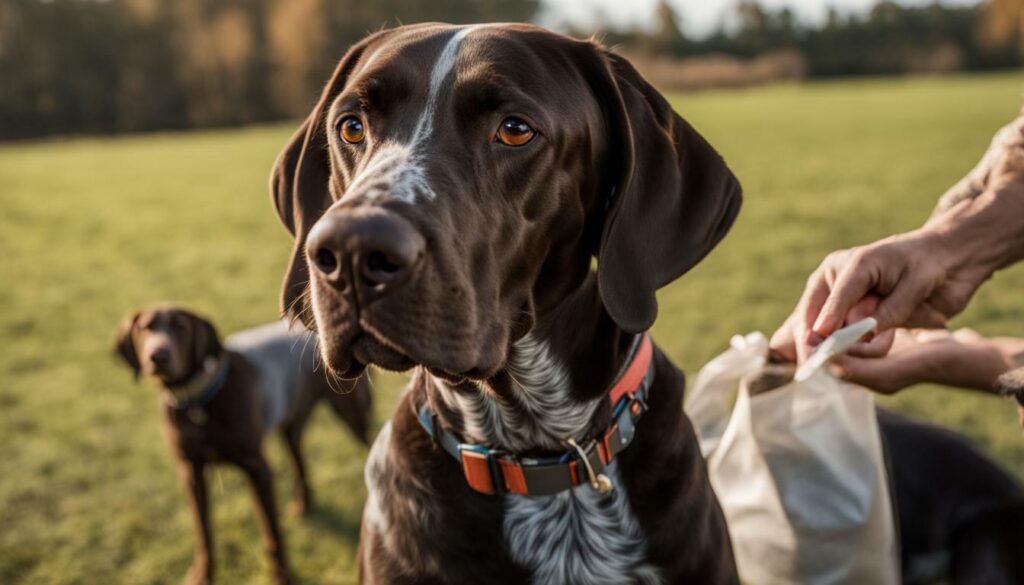
GSPs have a strong hunting instinct, but you can channel their energy and prevent destructive behavior by providing them with engaging toys and activities. By redirecting their natural instincts, you can ensure that their energy is well-spent and they remain mentally stimulated.
One effective way to do this is by incorporating playtime into their daily routine. Playing fetch, using interactive toys, and engaging in mentally stimulating games can help satisfy their need for hunting and retrieving. These activities not only provide physical exercise but also keep their minds occupied, reducing the likelihood of destructive behavior.
To make playtime even more enjoyable for your GSP, consider using toys that mimic prey, such as squeaky toys or toys with hidden treats. These types of toys tap into their hunting instincts and provide a rewarding experience. Regular play sessions will also help build a bond between you and your GSP, making training more effective.
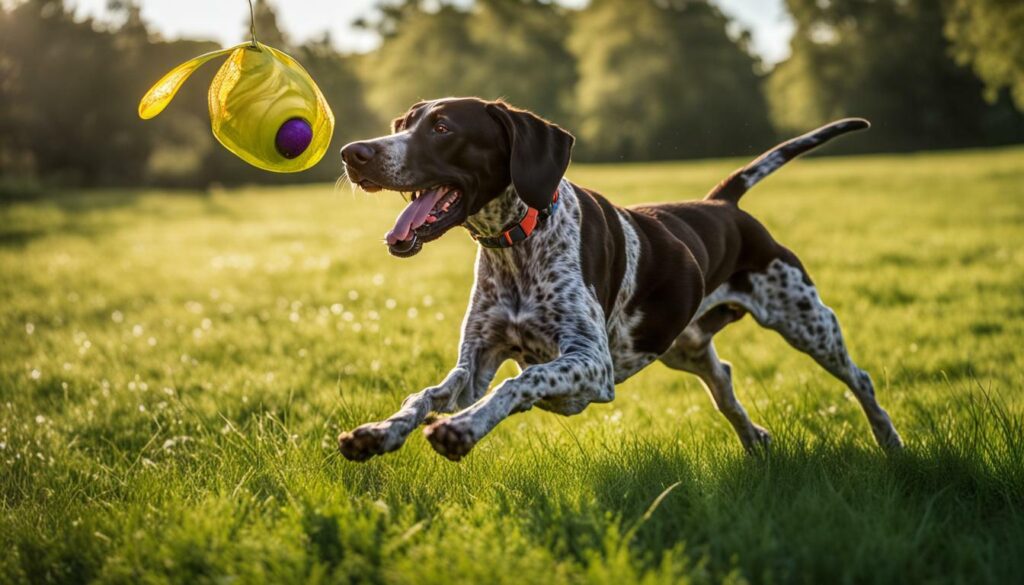
| Benefits of Playtime | Activities to Try |
|---|---|
| 1. Reduces destructive behavior | – Playing fetch in a safe, enclosed area |
| 2. Provides mental stimulation | – Using puzzle toys that require problem-solving skills |
| 3. Strengthens bond between owner and GSP | – Engaging in interactive games like hide-and-seek |
| 4. Helps release pent-up energy | – Participating in agility or obedience training |
Choosing the Right Toys
When selecting toys for your GSP, consider their size, durability, and safety. Opt for toys that are specifically designed for strong chewers and can withstand rough play. Interactive toys that require problem-solving, such as treat-dispensing puzzles, are also great options to keep your GSP mentally stimulated.
Remember to supervise your GSP while they are playing with toys, especially if they are prone to aggressive chewing. Regularly inspect toys for any signs of wear and tear to ensure they do not pose a choking hazard.
The Power of Regular Exercise
Regular exercise is crucial for German Shorthaired Pointers (GSPs) to maintain their physical and mental well-being, as well as to prevent undesirable behaviors. GSPs are an energetic breed with a natural hunting instinct, so providing them with ample opportunities to engage in physical activities is essential for their overall happiness and behavior.
One of the best ways to ensure your GSP gets enough exercise is to take them on daily walks or jogs. This not only helps burn off excess energy but also provides mental stimulation as they explore new surroundings. Additionally, incorporating games into your exercise routine, such as fetch or hide-and-seek, can further keep your GSP engaged and entertained.
In addition to physical exercise, mental stimulation is equally important for GSPs. Puzzle toys, interactive feeding devices, and obedience training sessions can help keep their minds sharp and prevent boredom-induced behaviors, such as chewing or digging.
| Benefits of Regular Exercise for GSPs: |
|---|
| – Increased overall health and fitness |
| – Reduction in destructive behaviors |
| – Improved mental well-being |
| – Strengthened bond between you and your GSP |
Remember to tailor the exercise routine to your GSP’s individual needs and gradually increase the intensity as they build endurance. Always consult with your veterinarian before starting any new exercise program, especially if your GSP has any underlying health conditions.
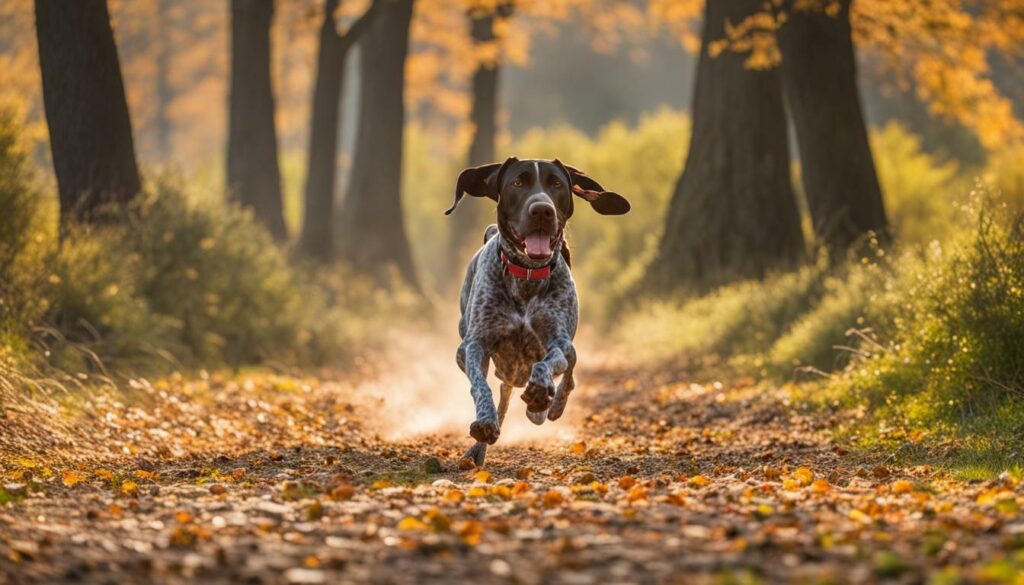
By incorporating regular exercise into your GSP’s daily routine, you can help them lead a happy, healthy, and well-behaved life. So lace up those walking shoes, grab their favorite toy, and enjoy the many benefits of staying active together!
Crate Training for Safety and Comfort
Crate training is a valuable tool when it comes to housebreaking and providing your GSP puppy with a safe and cozy den. By introducing your puppy to a crate early on, you can establish a positive association and create a designated space for them to rest and relax.
When choosing a crate, ensure that it is the right size for your growing GSP. It should be large enough for them to stand up, turn around, and lie down comfortably, but not so big that they have extra space to eliminate in one corner. Keep in mind that GSP puppies have a natural instinct to keep their sleeping area clean, so the crate should be just big enough for them to sleep in.
To introduce your GSP puppy to the crate, start by placing treats or their favorite toys inside to encourage exploration. Gradually increase the amount of time they spend in the crate, always rewarding them with praise and treats for good behavior. As your puppy becomes more comfortable, you can start closing the crate door for short periods, gradually extending the duration as they feel at ease.
| Benefits of Crate Training |
|---|
| 1. Housebreaking: Crate training helps establish a routine for your puppy, teaching them to hold their bladder and bowel movements until they are taken outside. |
| 2. Safety: A crate provides a secure space for your GSP when you are unable to supervise them. It prevents them from chewing on household items or getting into potentially dangerous situations. |
| 3. Travel: Crate training makes traveling with your GSP safer and more convenient by giving them a familiar and secure space during car rides. |
| 4. Comfort: GSPs are den animals by nature, and a crate provides them with a cozy and comfortable den-like environment that satisfies their natural instincts. |
Remember, crate training should always be done in a positive and gentle manner. Never use the crate as a form of punishment, as this may create negative associations and hinder the training process. With patience, consistency, and plenty of positive reinforcement, crate training can be a highly effective tool in raising a well-behaved and contented GSP.
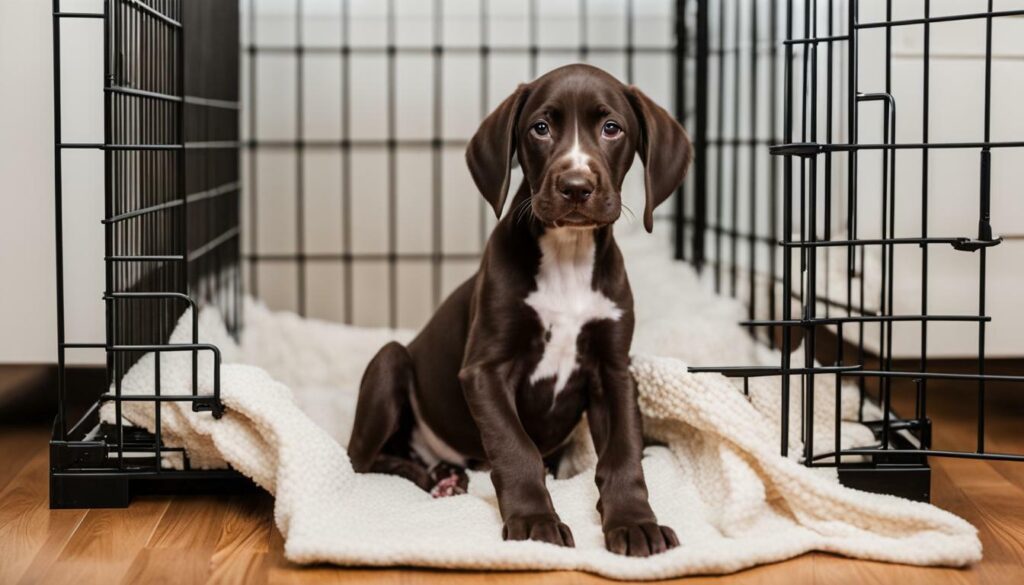
Teaching your German Shorthaired Pointer (GSP) proper house manners and leash etiquette are essential for a well-behaved and obedient companion. To ensure success in these areas, consistency and positive reinforcement are key.
When it comes to house training, establishing a routine is crucial. Take your GSP outside to the designated potty area after meals, playtime, and waking up in the morning. Use verbal cues such as “go potty” to associate the behavior with the command. Reward your GSP with praise and treats when they eliminate in the appropriate spot. In case of accidents indoors, clean them up without scolding your dog, as it may cause confusion and anxiety.
Leash training is equally important to ensure your GSP walks politely beside you without pulling or lunging. Start by introducing your dog to the leash and collar in a positive and comfortable manner. Begin with short walks in a quiet area, rewarding your GSP for walking calmly beside you. Use gentle corrections with the leash to redirect any undesirable behaviors. Remember to keep the leash loose and maintain a relaxed grip to promote a positive walking experience for your dog.
By implementing a structured house training routine and utilizing positive reinforcement during leash training, you can effectively teach your GSP proper house manners and leash etiquette. Remember to be patient and consistent, as each dog learns at their own pace. With dedication and perseverance, you will soon have a well-behaved and obedient German Shorthaired Pointer by your side.
| House Training Tips | Leash Training Tips |
|---|---|
|
|
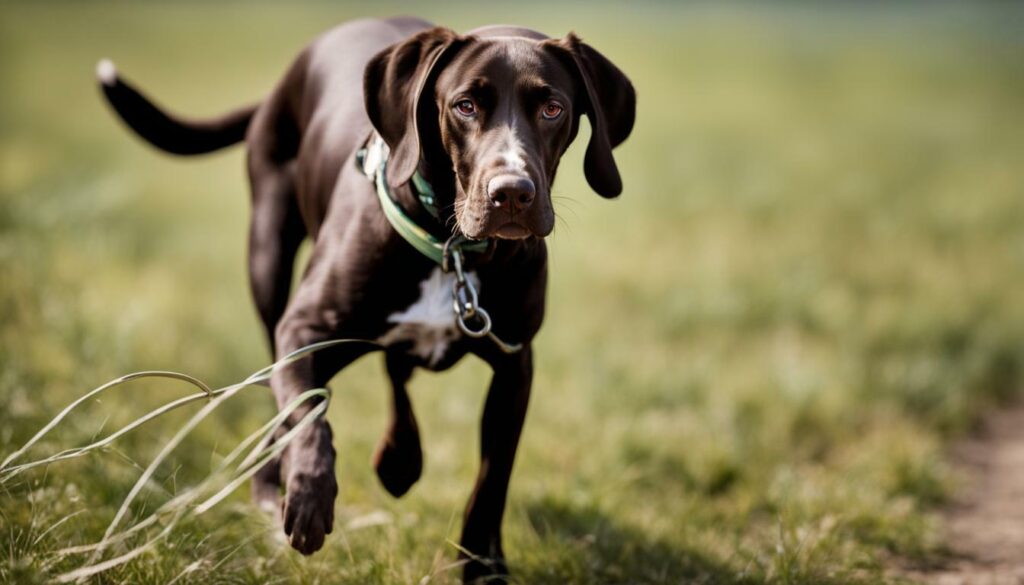
Socialization plays a vital role in raising a well-adjusted and friendly German Shorthaired Pointer (GSP), and it is crucial to expose your pup to various environments and situations. Early socialization helps your GSP develop confidence, learn how to interact with other dogs, and be comfortable around new people. Here are some tips to help you socialize your GSP effectively:
- Start early: Begin socializing your GSP puppy as soon as possible, ideally between 8 to 12 weeks of age. This is a critical period for their development, and the experiences they have during this time will shape their behavior and temperament in the future.
- Introduce new experiences: Expose your GSP to different environments, sounds, smells, and surfaces. Take them on walks in your neighborhood, introduce them to other friendly dogs, and let them meet new people. Gradually increase the level of challenge to help them adapt and become comfortable in different situations.
- Positive associations: Use positive reinforcement techniques to create positive associations with new experiences. Offer treats, praise, and rewards when your GSP responds well to new situations, people, or dogs. This will help them associate these encounters with positive experiences and increase their confidence.
- Training classes: Enroll your GSP in puppy training classes or socialization groups. These structured settings provide controlled opportunities for your GSP to interact with other puppies and learn from experienced trainers. It also allows them to practice obedience training in a distracting environment.
Remember, socialization is an ongoing process that should continue throughout your GSP’s life. Regularly expose them to new experiences, people, and dogs to maintain their social skills. If you encounter any challenges or need professional guidance, don’t hesitate to seek help from a certified dog trainer or behaviorist. By investing time and effort in socializing your GSP, you will raise a well-rounded and happy companion.

| Resource | Description |
|---|---|
| GSP Breed Clubs | Joining a GSP breed club can provide access to training resources, classes, and events specifically tailored to the breed. |
| Online Training Courses | There are various online platforms offering GSP-specific training courses and resources to help you train your GSP effectively from the comfort of your home. |
| Books | Several books are available that provide valuable insights and training techniques for GSPs. Look for titles written by reputable dog trainers or breed experts. |
| Local Dog Trainers | Consider enrolling your GSP in obedience classes or seeking one-on-one training sessions with a local dog trainer who has experience working with the breed. |
Positive Reinforcement and Consistency
GSPs respond best to positive reinforcement techniques and benefit greatly from consistent training sessions. Positive reinforcement involves rewarding your GSP with treats, praise, or play whenever they exhibit the desired behavior. This helps reinforce their understanding of what is expected of them and motivates them to continue behaving correctly.
Consistency is crucial in GSP training. Set clear rules and boundaries from the start and ensure that everyone in the household follows them consistently. This helps your GSP understand what is expected of them and avoids confusion. Consistency also extends to the timing and frequency of training sessions. Short, regular training sessions are more effective than infrequent, lengthy ones.
During training, it’s important to remain patient and remain calm. GSPs are intelligent and eager to please, but they may not grasp commands immediately. Avoid using punishment-based techniques as they can lead to fear or aggression. Instead, be patient, use positive reinforcement, and reward even small steps towards the desired behavior. With time and consistency, your GSP will understand what is expected of them and become a well-behaved companion.
| Positive Reinforcement Tips | Consistency Tips |
|---|---|
|
|
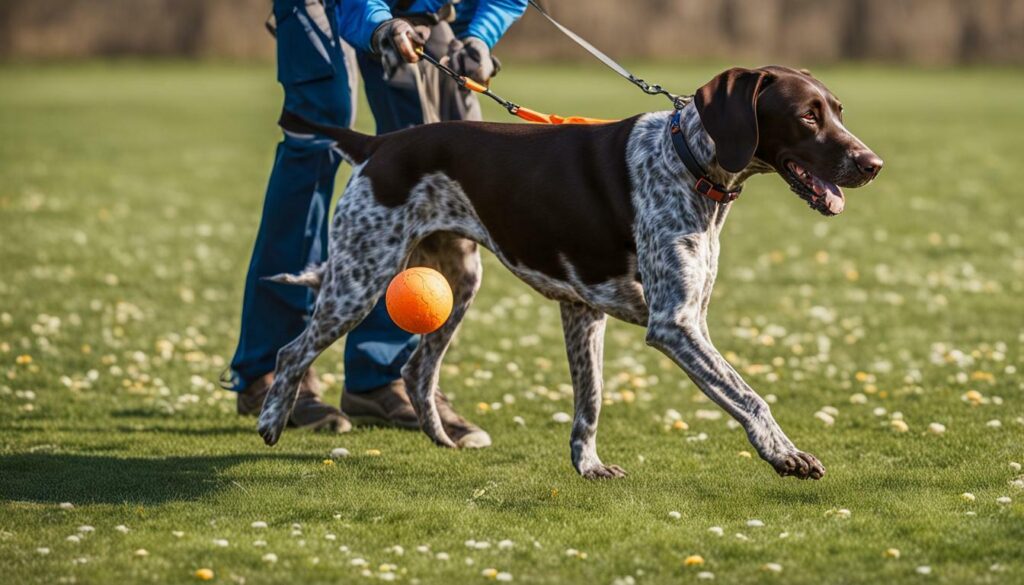
By utilizing positive reinforcement techniques and maintaining consistency in your GSP’s training, you can effectively shape their behavior and turn them into a well-behaved family pet. Remember, training takes time and patience, so stay committed and seek professional help if needed. With dedication and the right approach, you can successfully train your German Shorthaired Pointer and enjoy a harmonious relationship with your furry friend.
Addressing Behavioral Issues
If your GSP exhibits behavioral issues, it is important to address them promptly and systematically using scientifically proven techniques. Understanding the root cause of the problem is crucial in implementing effective solutions. Some common behavioral issues in German Shorthaired Pointers include aggression, separation anxiety, excessive barking, and destructive chewing.
To tackle these issues, it is essential to employ positive reinforcement techniques. Reward your GSP for good behavior and ignore or redirect them when they display undesirable behavior. Consistency is key in reinforcing positive habits and eliminating negative ones. Short, regular training sessions can help your GSP stay engaged and focused.
Seeking professional guidance from a certified dog trainer or behavioral specialist can be advantageous, especially if the issues persist or become more severe. These experts can provide you with a customized training plan and offer valuable insights on handling specific behavioral problems.
Remember, training a German Shorthaired Pointer requires time, patience, and a deep understanding of their breed-specific traits. By addressing behavioral issues promptly and systematically, you can ensure a harmonious and fulfilling relationship with your GSP.
FAQ
What is the purpose of crate training for a German Shorthaired Pointer?
Crate training provides a safe and comfortable space for your GSP when you are not around, ensuring their security and reducing destructive behaviors.
How important is regular exercise for a German Shorthaired Pointer?
Regular exercise is crucial for a GSP to prevent destructive behavior caused by pent-up energy. It helps keep them physically and mentally stimulated.
What are some basic commands I should teach my German Shorthaired Pointer?
Teaching commands like sit, stay, come, and heel is essential for obedience training and establishing control over your GSP.
How can I redirect my GSP’s hunting instinct through play?
Engaging your GSP in games, fetch, and providing them with toys can help redirect their natural hunting instinct and keep them mentally stimulated.
What is the importance of positive reinforcement in GSP training?
Positive reinforcement, such as using treats and praise, helps motivate your GSP and strengthens the desired behaviors, making training more effective and enjoyable for both of you.
How do I address behavioral issues during GSP training?
Behavioral issues should be addressed using a systematic approach based on scientific principles. Seeking professional guidance can also be beneficial in addressing specific problems.
Why is socializing my GSP important?
Socializing your GSP with other dogs and people helps them develop good manners and ensures they are comfortable and well-behaved in various social situations.
What are the milestones in house training and leash training for a German Shorthaired Pointer?
House training involves teaching your GSP to eliminate outside and establishing a schedule. Leash training focuses on teaching your GSP to walk calmly without pulling on the leash.
How can I achieve consistency in GSP training?
Consistency is crucial in GSP training. Using the same commands, practicing routines, and reinforcing desired behaviors consistently will help your GSP understand and learn more effectively.
Should I seek professional guidance for training my GSP?
If you encounter difficulties or need expert advice, it is recommended to seek professional guidance from a qualified dog trainer or behaviorist to ensure the best training outcomes for your GSP.
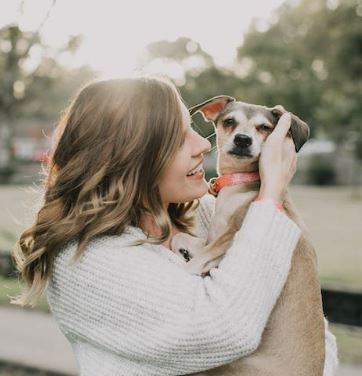
Marissa Delotta, 36, from Dayton, Ohio, is the creative force behind Roverboard.com, a beloved online destination for dog lovers. As a dedicated mom and canine enthusiast, Marissa combines her family experiences with her love for dogs to offer a platform where dog owners can exchange tips, heartwarming stories, and advice. Her website has become a vibrant community for sharing the joys of dog parenting. In her free time, Marissa enjoys exploring dog parks with her family and volunteering at local animal shelters.

